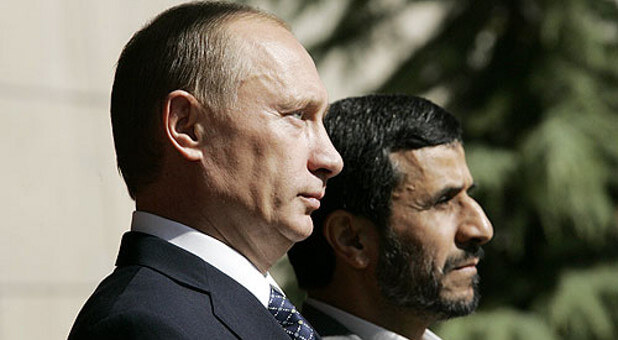Ezekiel 38-39 foretells a massive future invasion of Israel by the armed forces of six nations. Five of those nations are identified in Ezekiel 38:5-6 with the names they bore in Ezekiel’s time.
The first nation, Persia, is now the modern state of Iran. It is currently ruled by an Islamic fundamentalist government that is building significant military power, including the development of nuclear weapons. It has openly declared its commitment to the annihilation of the Jewish state of Israel.
The second nation, Ethiopia, was not the same as modern Ethiopia. Instead, it occupied the area later known as Nubia. Today it is known as Sudan and is dominated by an Islamic fundamentalist government that is using brutal means, including crucifixion of Christians, to attempt to establish a pure, Islamic state.
The third nation, Libya, the western neighbor of Egypt, is also an Islamic nation today. It is strongly anti-West and anti-Israel, and Western intelligence has been informed that Libya has hired Eastern European and former Soviet military scientists to aid its development of military power.
The people of the fourth nation, Gomer, were also known as the Cimmerians. They originally lived north of the Caucasus Mountains in the southern part of what is modern Russia. In Ezekiel’s time, they had settled in what is now central Turkey.
The people of the fifth nation, Togarmah, were identified by Josephus as the Phrygians (Antiquities, I. 6, 1 [126]), who settled in Cappadocia, now eastern Turkey.
Considering the location of the fourth and fifth nations in Turkey, it should be noted that the present secular government of Turkey is being threatened by Islamic fundamentalists. As a result, some leaders fear that Turkey could become another Iran. If that happens, all the nations named in Ezekiel 38:5-6 will be characterized by a militant Islamic hatred of Israel.
The Identity of the Leader of the Invasion
The five nations of Ezekiel 38:5–6 will be led by a sixth in the future attack against Israel. God gave three identifying marks for that leader.
The Leader’s Name
The leader will be “Gog, of the land of Magog” (see Ezek. 38:2). Jerome, a prominent church leader (345-420 A.D.), declared that Magog was located north of the Caucasus Mountains, near the Caspian Sea. Josephus (Antiquities, I. 6, 1 [123]) and Greek writers associated the name “ Magog ” with the Scythians. According to the revised International Standard Bible Encyclopedia, the major group of Scythians lived near the Black Sea “from the Caucasus around to the Danube.” It appears, then, that the land of Magog was located near the Black and Caspian Seas north of the Caucasus Mountains, in the southern part of 20th-century Russia.
The Leader’s Political Position
The leader is identified as “the chief prince” or ruler “of Meshech and Tubal” (see Ezek. 38:2; 39:1). Classical Greek writers called the people of Meshech the “Moschoi,” and Assyrian records referred to them as the “Muski.” This group settled in the area of Armenia, “where the borders of Russia, Iran and Turkey converge.”
The people of Tubal were located in the central part of Turkey immediately west of Togarmah.















































